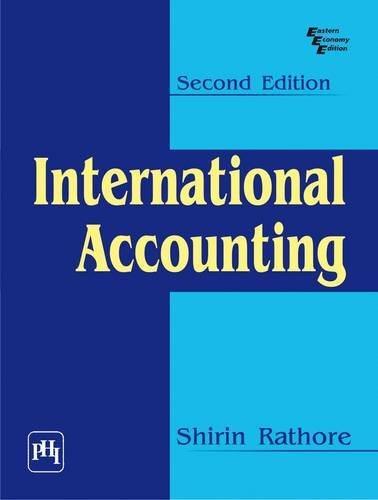Question
The comparative balance sheet of Olson-Jones Industries Inc. for December 31, 20Y2 and 20Y1, is as follows: Dec. 31, 20Y2 Dec. 31, 20Y1 Assets Cash
The comparative balance sheet of Olson-Jones Industries Inc. for December 31, 20Y2 and 20Y1, is as follows:
| Dec. 31, 20Y2 | Dec. 31, 20Y1 | ||||
| Assets | |||||
| Cash | $121 | $38 | |||
| Accounts receivable (net) | 69 | 48 | |||
| Inventories | 43 | 26 | |||
| Land | 99 | 108 | |||
| Equipment | 55 | 41 | |||
| Accumulated depreciation-equipment | (15) | (8) | |||
| Total Assets | $372 | $253 | |||
| Liabilities and Stockholders' Equity | |||||
| Accounts payable (merchandise creditors) | $47 | $38 | |||
| Dividends payable | 7 | - | |||
| Common stock, $1 par | 25 | 12 | |||
| Paid-in capital: Excess of issue price over parcommon stock | 65 | 30 | |||
| Retained earnings | 228 | 173 | |||
| Total liabilities and stockholders' equity | $372 | $253 | |||
The following additional information is taken from the records:
- Land was sold for $23.
- Equipment was acquired for cash.
- There were no disposals of equipment during the year.
- The common stock was issued for cash.
- There was a $80 credit to Retained Earnings for net income.
- There was a $25 debit to Retained Earnings for cash dividends declared.
a. Prepare a statement of cash flows, using the indirect method of presenting cash flows from operating activities. Use the minus sign to indicate cash out flows, cash payments, decreases in cash, or any negative adjustments.
| Cash flows from operating activities: | ||
| Cash received from sale of common stockDecrease in accounts receivableIncrease in inventoriesNet incomeNet income | $Net income | |
| Adjustments to reconcile net income to net cash flow from operating activities: | ||
| Decrease in accounts receivableDepreciationIncrease in accounts receivableLoss on sale of landDepreciation | Depreciation | |
| Decrease in inventoriesGain on sale of landIncrease in accounts payableLoss on sale of landGain on sale of land | Gain on sale of land | |
| Changes in current operating assets and liabilities: | ||
| Decrease in accounts receivableDecrease in inventoriesDepreciationIncrease in accounts receivable | - Select - | |
| Decrease in accounts payableDecrease in accounts receivableDecrease in inventoriesIncrease in inventories | - Select - | |
| Cash paid for dividendsDecrease in accounts payableDepreciationIncrease in accounts payable | - Select - | |
| Net cash flow from operating activities | $fill in the blank f995c007500efe8_13 | |
| Cash flows from (used for) investing activities: | ||
| Cash paid for dividendsCash from sale of landDepreciationGain on sale of land | $- Select - | |
| Cash used for purchase of equipmentCash received from sale of common stockDepreciationIncrease in inventories | - Select - | |
| Net cash flow from investing activities | fill in the blank f995c007500efe8_18 | |
| Cash flows from (used for) financing activities: | ||
| Cash from sale of common stockCash received from sale of landDecrease in accounts payableDepreciation | $- Select - | |
| Cash used for dividendsCash received from sale of landDecrease in inventoriesIncrease in accounts receivable | - Select - | |
| Net cash flow from financing activities | fill in the blank f995c007500efe8_23 | |
| Decrease in cashIncrease in cash | $- Select - | |
| Cash at the beginning of the year | fill in the blank f995c007500efe8_26 | |
| Cash at the end of the year | $fill in the blank f995c007500efe8_27 |
b. Was Olson-Jones Industries Inc.s net cash flow from operations more or less than net income?
LessMore
Step by Step Solution
There are 3 Steps involved in it
Step: 1

Get Instant Access to Expert-Tailored Solutions
See step-by-step solutions with expert insights and AI powered tools for academic success
Step: 2

Step: 3

Ace Your Homework with AI
Get the answers you need in no time with our AI-driven, step-by-step assistance
Get Started


